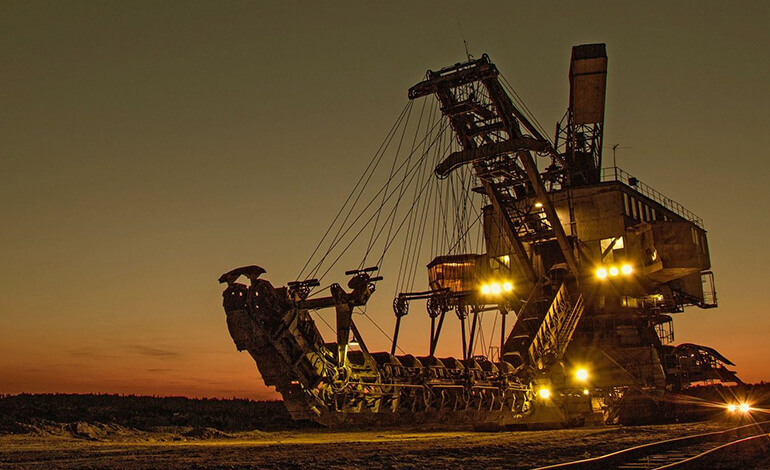
WHAT IS MILD STEEL:
Mild steel is a type of Carbon steel with low carbon content from 0.05% to 0.25% carbon composition; it is also commonly known as low carbon steel in the steel industry. If we increase the carbon content from 0.30% to up to 2% what we will have in our hands will be categorized as high carbon steel, and if we further go on and increase the carbon content beyond 2% threshold limit, what we will get will be termed as the cast iron.
Mild steel cannot be labelled as an alloy, since it does not have any more elements other iron and carbon itself, Due to the same composition mild steel has found its own place in the market and has many benefits over other steel and iron products available in the market. Less carbon content also means that mild steel is typically more ductile, machinable, and wieldable than high carbon steel as well.
The low carbon content signifies that it has very little carbon content comparatively to block dislocations in its crystal structure, which results in less tensile strength when compared to high carbon and alloy steels. Mild steel also has a very high amount of iron and ferrite, making it magnetic in its properties, and enabling us to easily separate and recycle mild steel from the dump.
TYPES OF CARBON STEEL:
Carbon steel can be broadly categorized into three types, depending on the carbon content composition, as discussed below.
LOW CARBON STEEL:
Low carbon steel is also known as mild steel as discussed above, its carbon content varies from 0.02% to 0.25%. Being the cheapest option in the steel category, it is considered best for shaping and moulding jobs as it is not very stiff compared to higher carbon content steels. Carburization is the process which industry experts adopt if and when they want to harden the surface of mild steel products for different uses.
MEDIUM CARBON STEEL:
Medium carbon steels have a Composition of 0.29%-0.54% Carbon, with 0.60%- 1.65% of Manganese, along with other impurities. Medium carbon steel is found to have more ductility and strength, with long-wearing properties, and finds its use in various structural and construction needs.
HIGH CARBON STEEL:
They have a high carbon composition ranging from 0.50% to 2%, with 0.30% to 0.90% manganese content. They have a shape memory due to its hardness and are considered ideal for spring and wire manufacturing across industry.
BENEFITS OF MILD STEEL:
- COST EFFECTIVE:
- WELDABLE:
- DUCTILITY:
- CAN BE CARBURISED:
- RECYCLABILITY:
Mild steel is considered as the most cost effective steel in the industry, and is used extensively in many everyday objects such as automobile chassis, motorcycle frame and plethora of cookwares. This usability of mild steel is due its low carbon content which makes it less tensile and more mouldable; also when and if required in big chunks mild steel can be easily manufactured as per the client’s requirements which is an additional plus point.
Due to its composition and properties, electric current travels through mild steel with ease making it very easy for us to weld two pieces together. If we consider stainless steel for instance, it requires a great amount of technical and manual efforts to seal two pieces together, so we can say that using mild steel leads to lesser man-hours and electrical costs, saving a lot of money in the long run.
Ductility if the measure of plastic elongation or deformation that any metal can go through and then come back to its initial shape without breaking or enduring any permanent defects.
One of the downsides of mild steel is its low tensile strength, which means that it will break very easily if great amount of tension is applied to it. But this tensile issue can be solved with ease by the process of carburisation and quenching, carburising is the process in which we heat iron or steel in the presence of decomposing liberated carbon, whereas quenching is the process of cooling down this heated steel or iron. Once the process is over, mild steel comes out with a hard surface and soft core in the inside, this process helps increase the strength and wear properties of mild steel to great strength.
Just like most of the metals mild steel is easily recyclable, making it eco-friendly and cheap at the same time. Due to the magnetic properties of the mild steel it becomes easier for us to sort out the mild steel form the unsorted dump; So we highly recommend recycling the scraps and left out bits of mild steel to create new and useful products, as it is easier than mining the iron ore and then processing it to get the desired products.
Now, that we all have some insight on the usage and properties of mild steel, we hope you are in much informed position to procure mild steel from the market. Indio corp is one of the leading steel trading and procurement platforms in the industry, which offers most competitive pricing in market along with assured on-time delivery promise and procurement assistance. If you are looking for mild steel dealers within Maharashtra or for that matter anywhere in India, Indio corp can be the best option for you
